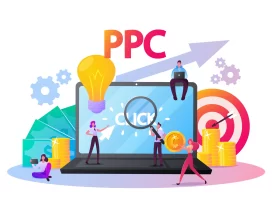
How to Create an Irresistible Sales Pitch That Converts
Your sales pitch should be anchored in facts and data. This helps disarm your audience’s wariness and allows them to better evaluate your offer. Tap into CRM databases and customer profiles to get a better picture of your target audience’s pain points and needs.
Keep your audience engaged by telling a short story about your product or service. Start with the problem, then lead into your solution.
Get to Know Your Audience
Before you can craft a sales pitch that is irresistible, you have to get to know your audience. Without a clear understanding of who you are trying to reach, you will find it difficult to tailor your message to their needs and pain points.
Take the time to review any current data and analytics you have on your audience, as well as their specific demographics. For example, learning about things like age, income levels, and hobbies can help you target your messages more effectively.
Remember, buyers care more about their problems than they do about you and your unique offering. So, focus on how your product or service can solve their issues and make their lives easier. This will ensure that your message is heard, and ultimately acted on.
Keep It Simple
Many business owners struggle to keep their sales pitch compelling, succinct and on point. Too often, they go overboard or focus on the wrong items that will drive interest in their products or services.
One of the key factors in creating a memorable sales pitch is to blow your audience’s mind. This can be accomplished by demonstrating your product or service in a unique way, using a counterintuitive fact or story, or providing impressive statistics.
Another way to help make your pitch stand out is by associating it with a widely-recognized ideal or theme. For example, if you’re selling a travel company, you could highlight the “magic” of Alsace by showing images of the beautiful region. You can also grab your audience’s attention by focusing on your customer success stories and testimonials.
Tell a Story
As a salesperson, your job is to connect with potential buyers and help them understand why what you offer can solve their problems. One of the most effective ways to do this is through storytelling.
You can use any type of story to make your sales pitch more compelling, but be sure that it’s relevant to your audience and your business. You can also try to evoke emotions in your listeners. Whether it’s happiness, sadness, surprise or anger, eliciting an emotion will keep them engaged in your story and can be very persuasive.
Another way to add drama to your story is by changing the tone and pace of your voice. For example, you can speed up your speaking rhythm to add excitement and then lower your voice to signal a close.
Focus on the Benefits
You want to be as clear and concise as possible. The more information you provide, the easier it will be for your audience to understand your pitch.
Don’t focus on listing the product’s features; instead, emphasize how those features can help your audience achieve their goals. For example, if you’re selling life insurance, your prospect will want to know how purchasing your product can provide them with peace of mind and security for their family.
Be enthusiastic about what you’re offering; your prospects will be able to hear it in your voice and see it on your face. They will be much more likely to buy from someone who is passionate about their product and eager to share it with others. This is the only way to build genuine customer relationships.
Don’t Be Afraid to Practice
A sales pitch can have a huge impact on whether or not you make the sale. However, crafting an irresistible first-time offer is not as simple as it sounds.
You want your sales presentation to feel authentic and personal, so it should start off by introducing yourself, and then gauging interest in the specific pain point that your company solves. From there, you can then explain your value proposition and give examples of the results that your clients have achieved as a result of using your product.
Lastly, don’t be afraid to practice your pitch in front of a mirror and ask for feedback from colleagues or mentors. The more you practice, the more confident you will be when delivering your pitch in person.








